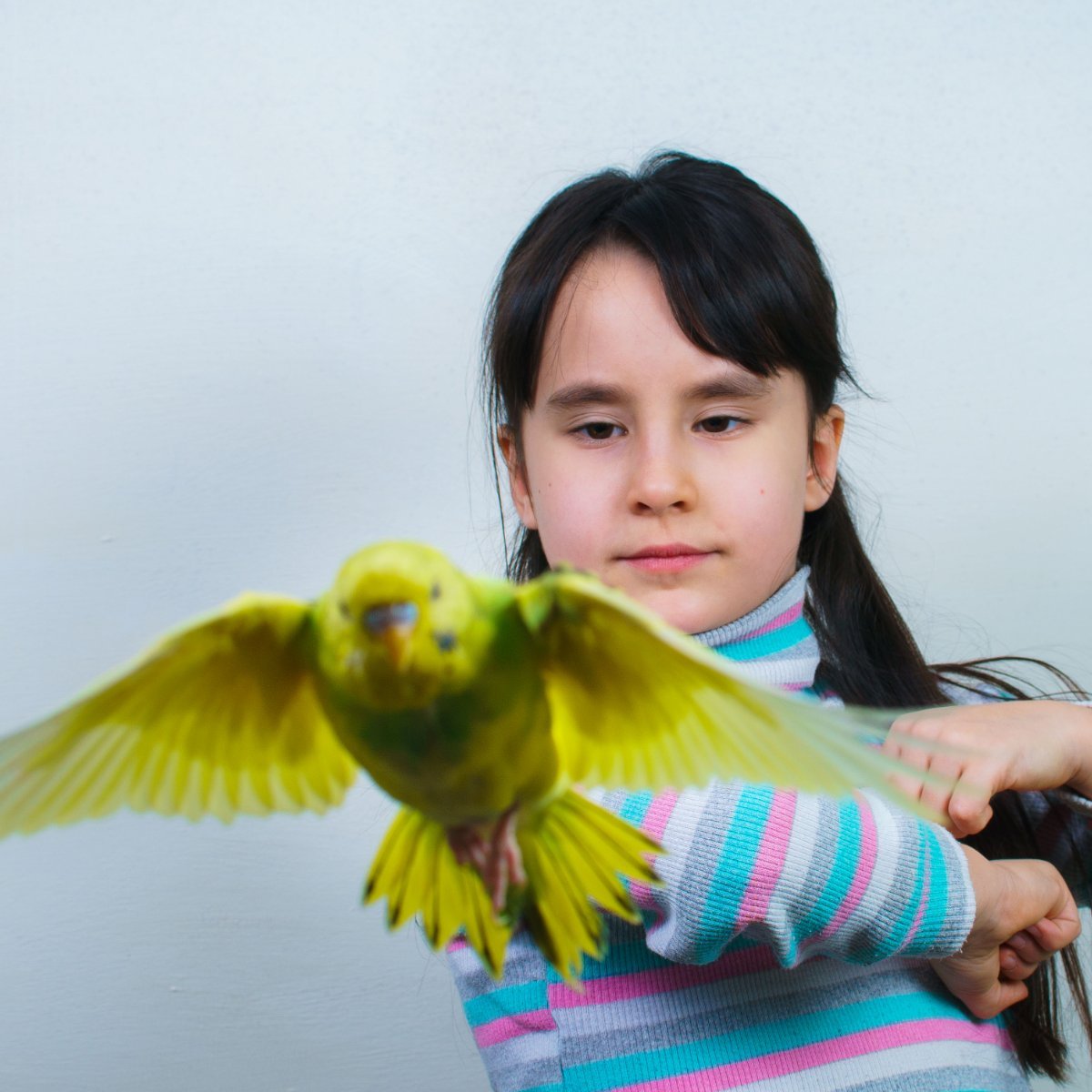
Is It Better To Clip Your Parrot’s Wings Or Not?
Last Updated on by Mitch Rezman
Why is humankind so focused on lopping off body parts?
We “bob” dog’s ears and tails.
We castrate bulls.
We lop off the foreskin of infant males.
And now we wanna chop off the wings of animals that have been flying for 99 million years.
“Earn the right to fly”? Preposterous, flight is what birds are all about. Flight was granted to birds long before, way long before humans could cook food with fire.
Let’s jump into the original Quora question here.
Let’s stop for a moment and talk about wing clipping.
Everyone says you have to learn how to do it right.
It’s not about how to use a scissors and where to make the cuts.
Even a veterinarian who looks at say a Congo African grey and says “I’m going to take three inches off the birds wings” then doesn’t test for lift is not doing it right.
Birds have to be able to turn and slow down, “stall” like an aircraft, so they don’t fly into things head first.
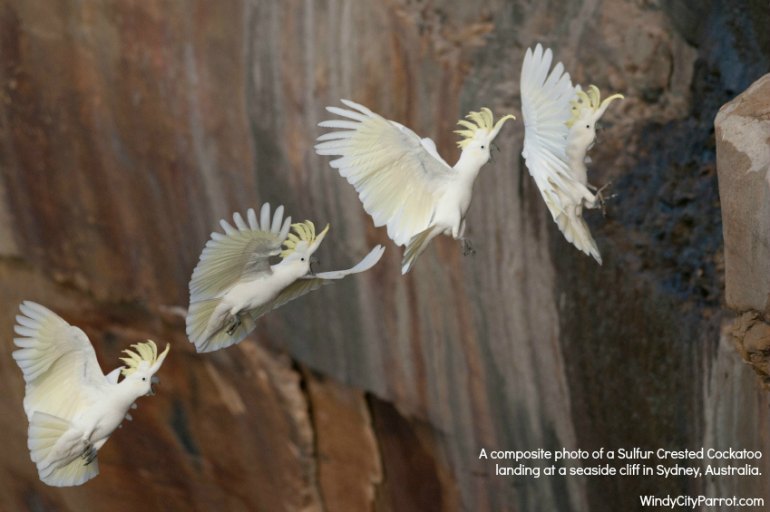
Wing clipping is all about providing controlled flight for the bird.
Here is a diagram of a typical bird’s wing feathers.
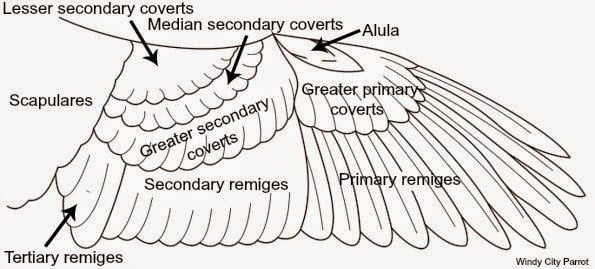
We want to stick with the “Primary remiges” aka “Primary flight feathers”.
Start by clipping perhaps an inch or so off in a neat, straight line, perpendicular to the bird’s body.
Some purists will leave the outer feather intact which in fact does help birds navigate better but is very dangerous because a single feather can get caught between the birdcage bars and cause severe wing damage.
With a smaller bird like a cockatiel, you can toss the bird to someone else standing within your home (great flight training technique too).
A larger bird, say a blue-fronted Amazon would be held two to four feet above the ground, then push your hand forward, which urges the parrot to fly.
If the bird gains lift while flapping, trim off another inch of primary flight feathers.
Repeat this process until the bird can gently glide (with some reactive wing flapping from 4 feet high (typical bird cage height) to the ground without injuring itself.
Besides landing which we will talk about in a moment, think about feather pluckers.
An Eclectus parrot can have as many as 8000 feathers.
When you clip a bird’s primary flight feathers you are clipping 11 or 12 of the largest and most important feathers on their body.
When the bird preens, which they do about a third of their day, their beak and tongue will encounter roughness on the trimmed feathers (regardless of scissor quality).
Over-preening may occur.
This is one of many feather plucking triggers.
It’s another wing clipping issue having nothing to do with flight.
There were many comments in this Quora thread about teaching birds how to fly.
Judging from the six answers (so far) here on Quora I can see that nowhere near enough thought is put into this question as to whether should we or should not clip a bird’s wings.
Somehow everybody pigeon holes (good one, mitch) wing clipping to just the activity of flight.
Let’s consider more negative implications for wing clipping.
We already know that wing clipping can trigger feather plucking.
Birds and parrots use wings not only for flight but for balance when standing.
Clip 24 large primary flight feathers and a parrot’s sense of balance is reduced while partially losing the ability to counterbalance.
Then trim their toenails, (which most humans do or have done while clipping their wings), put them back in a cage with a new-fangled perch, cover them up at night, and one loud sound of fireworks or a gunshot (writing from Chicago) and the bird freaks out, flaps uncontrollably breaking a wing while falling to the bottom of their cage, having no lift to stop the fall.
I’ll let that visual sink in for a moment.
Another answer to the question “does wing clipping make a bird any safer”?
Nope.
Wing clipping puts your bird at risk.
Birds get hormonal.
I hear both mortal human beings as well as veterinarians say “let’s teach your bird a lesson and clip their wings”.
I know that when I get a haircut I don’t necessarily want to choke the life out of another human being any less.
No one has yet explained to me the correlation between wing trimming and bad hormonal behavior.
There are no nerves in a bird’s wing feathers (except where attached to the body) nor any blood vessels which is why the birds don’t feel their wing feathers getting cut and mature feather shafts do not bleed.
What is the message physically/physiologically being sent to the birds’ brain that would calm them down?
If your bird is hormonal, its circadian rhythms are probably confused and need to be reset with light therapy.
Light therapy is simple, cheap, and benign but that’s part of another conversation.
If anything, wing trimming will make your bird act even more hormonal.
Parrots are prey animals. They have a bite-or-flight mentality.
I’ve gotten thousands of inquiries over the years about biting birds.
The first question I ask is “are the bird’s wings clipped”?
If the bird knows it can’t fly away, it’s more likely to bite YOU.
If there are other prey animals in the house (cats and dogs) it is much easier for a bird to escape via flight.
Floor walking birds are more likely stepped on or be crushed in doorways than flighted birds that can escape harm.
Birds don’t need our help to fly – THEY ARE BIRDS!
If we are to keep them flighted in our home we need to teach them how to land and follow some simple “best practices”, which we will get to in a moment.
Addressing safety issues like keeping your bird from flying into a mirror or a window is common sense.
Make sure there are no mirrors in the room the bird is in.
We keep our apartment windows (that go up to 9½ feet) covered with colorful stained glass, lots of pretty but fake orchids and one very large mother-in-law’s tongue plant. (which yes, is poisonous, but Peaches has no interest in plants and is always supervised, and never goes in that room).
Window shades or shutters are in place over the tops of the double-hung window sashes
No glass tables with sharp corners should be in the room either (or put something on the sharp corners to keep both birds and humans safe)
(I never liked glass tables – it’s an ex-wife thing.)
The people who decry “I don’t want my bird to fly into a wall”.
Birds can see walls better than you and I.
I always go back to the first time you got behind the wheel of an automobile.
How did that go for you?
Was the experience flawless with proper acceleration and deceleration?
Changing lanes came naturally, right?
Of course not.
The easiest place to start with a flighted bird in your home is teaching where and how to land.
Flying into the side or the front of a birdcage chest first is a bad plan.
Make sure your bird has landing areas on top of its cages which it considers it’s own.
In our 62-foot-long apartment in Chicago, we have various landing areas for Peaches.
When teaching Peaches to land, we used the bed in the beginning.
Re: Apparently there is a time window of development at which a bird is able to pick up flight easily and if this is not done at an early age, then flight may be impossible to learn as an older bird.
I’ve had a few birds like this where there is no apparent physical deficit, yet the bird cannot fly nor learn to fly.
Our nine-year-old female Senegal came to us after being told by the veterinarian that she would never fly because she never fledged and spent seven years of her life in a rescue with clipped wings, while in her cage 22 hours a day.
Peaches apparently did not understand she could not fly because after about nine months, the time it took for her flight feathers to grow back in, (birds and rescues are a whole different paradigm than birds in someone’s home) she started to fly, with my gentle urging.
Do we really even know how bird’s wings work?
I always begin by taking the bird and holding it 1 foot away from it’s “home” bird cage then kind of flipping my hand forward it so it knows it’s time to take off.
A bird that leaves your hand will instinctively flap its wings so it doesn’t fall to the ground.
We keep an arched Booda soft rope perch on her cage at home and her bird cage in our travel trailer.
She knows that her returning to her cage on the top perch from anywhere else, she has a safe and comfortable place to land.
Rope perches add additional “grip-ability”.
At home, I spend a lot of time at my desk which is in the middle of the dining room (long story) and she likes to fly to the top of my office chair.
Every week I use “binder clips” to fasten a new black towel over the headrest.
It gets soiled, placed in the laundry, and replaced anew, every Friday.
She has a couple of play stands in the living room and designated landing areas in the bedroom, kitchen and bath.
Teach your bird where these areas are.
Practice – practice – practice – where and how to land.
Lots of birds like to land on top of doors.
Ensure that these doors are not open and closed a lot.
In a space with a flighted bird, you may spend a lot of time “looking up” for the bird.
Popcorn our albino cockatiel loved the high crown molding.
It took a week to scrub the molding tops, sanitizing and making them safe and suitable for a white bird.
If you have a flighted bird in your home, learn how to walk through closed doors which you’ll now be opening, backwards, to see that a bird is not following you at 10 to 30 miles an hour.
We’ve timed Peaches.
She flies indoors at about 6 to 8 miles an hour. She is a feathered blimp, she flies so slowly.
On the flip side, cockatiels can achieve speeds of 30 miles an hour with a few flaps of their wings.
Of course you should be concerned about birds not flying out of open doors.
We don’t lop dogs legs off because they escape,
We shouldn’t punish our birds in the name of keeping them safe.
If you have a bird in your home you need certain rules.
If there’s an exterior door open there should be a secondary door or even curtains closed preventing escape prior to the exterior door (think vestibule).
That’s what birds want to do, escape to fly in the sky.
Birds and parrots can be trained to return.
Birds have been returning to their handlers from the time the Genghis Khan had 100,000 falcons.
Homing pigeons return organically.
What is your bird’s training program?
Do you offer clicker training on a regular basis?
Do you work to train your bird for flight recall, where he or she returns to you will upon command?
There are hundreds of videos on YouTube illustrating free flight parrots that return after they have all the fun.
If you walk outside with a bird on your shoulder without thinking and the bird flies off, you’re a dumbass.
I’ve said it time and again that the proper size for a bird cage is at least 30 acres.
In conclusion, if you bring a feathered velociraptor into your home and lop off its wings so it’s easier to keep as a pet, I would ask why do you really want a bird?
Because you really enjoy vacuuming?
You’ll vacuum a lot.
Because you enjoy scraping food particulate as hard as concrete off bumpy metal and walls?
I do minor bird cage cleaning every day so the task doesn’t get too daunting come Saturday morning.
Come on, really, birds have enjoyed flight for 99 million years, we made them captive starting in the 16th century (Alex T Great – namesake to the alexandrine parakeet) by stealing their freedom, let’s allow them to keep their dignity by letting them fly.
Answered by Mitch Rezman
Approved by Catherine Tobsing
Author Profile
Latest entries
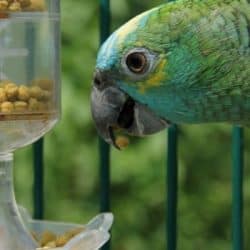 Feeding Exotic BirdsDecember 29, 2025How to Switch or Convert Your Bird From Seeds to Pellets: Real-Life Case Studies and Practical Guidance
Feeding Exotic BirdsDecember 29, 2025How to Switch or Convert Your Bird From Seeds to Pellets: Real-Life Case Studies and Practical Guidance Feeding Exotic BirdsDecember 16, 2025A Practical, Budget-Smart Guide to Feeding Birds Well
Feeding Exotic BirdsDecember 16, 2025A Practical, Budget-Smart Guide to Feeding Birds Well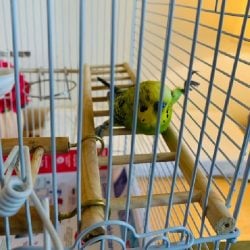 Bird EnviornmentsDecember 7, 2025Understanding Budgie Cage Bar Orientation: Myths, Realities & Practical Solutions for Vertical-Bar Bird Cages
Bird EnviornmentsDecember 7, 2025Understanding Budgie Cage Bar Orientation: Myths, Realities & Practical Solutions for Vertical-Bar Bird Cages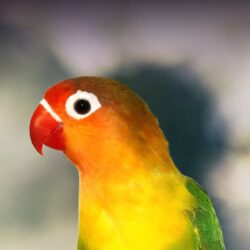 Feeding Exotic BirdsDecember 5, 2025How Dr. T.J. Lafeber Rewrote the Future of Pet Bird Nutrition
Feeding Exotic BirdsDecember 5, 2025How Dr. T.J. Lafeber Rewrote the Future of Pet Bird Nutrition
This Post Has One Comment
Leave a Reply
You must be logged in to post a comment.
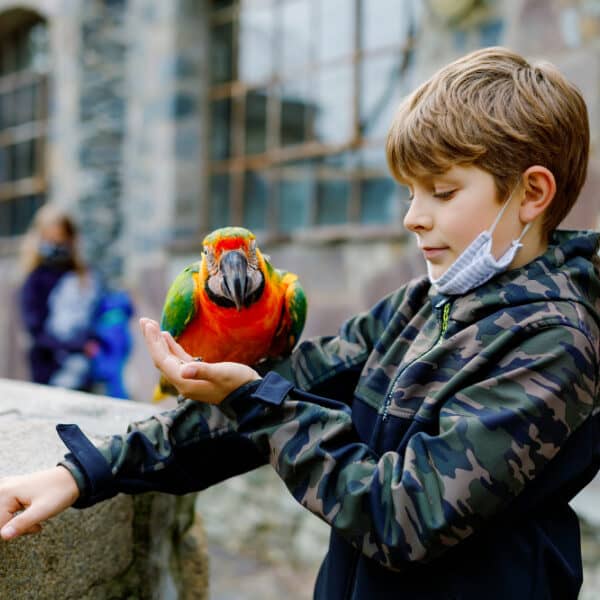


Julinka
3 Oct 2022I agree 100%! Birds are made to fly. They absolutely love it. After a few tries none of my birds ever had a problem and none were ever injured from flying.